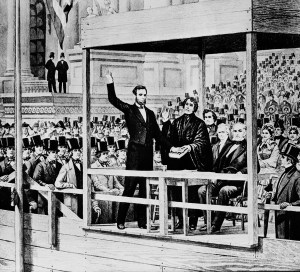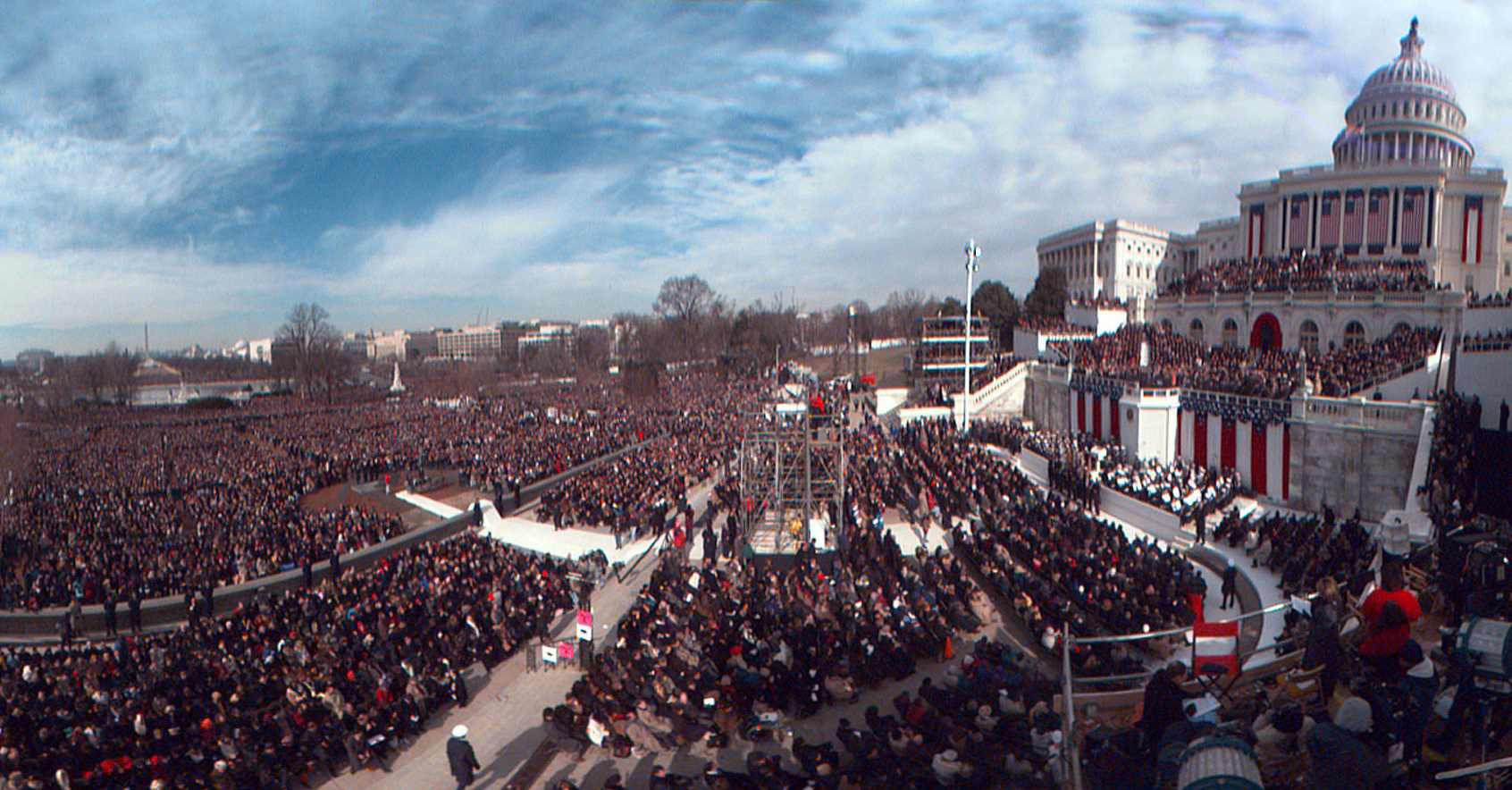While controversy has swirled around the performers at President-elect Donald Trump’s inauguration, only a few people will know what the outspoken businessman-turned-politician is actually going to say in his address.
Videos by Rare
Here’s a look at 10 of the more notable inaugural addresses.
10. William Henry Harrison
Inauguration: March 4, 1841
Back when men were men, President William Henry Harrison delivered his two-hour inaugural address without a coat and hat in freezing weather. His bravado earned him one of the first cases of presidential pneumonia – and the first one to be fatal. Harrison died 30 days after his address.
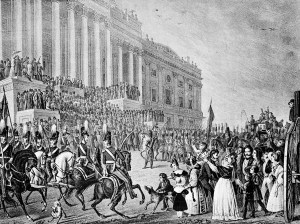
9. George W. Bush
Inauguration: January 20, 2001
After an election that made “hanging chad” part of the nation’s political vocabulary and a trip to the United States Supreme Court, George W. Bush was declared president. Democrat Al Gore won the popular vote, but Bush won the electoral college after a recount in Florida. With the largest protests in 30 years surrounding the capitol, Bush urged civility and unity in his address.
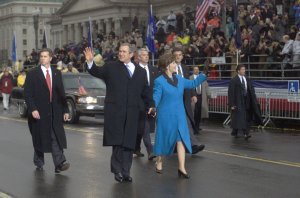
8. Woodrow Wilson
Inauguration: March 5, 1917
Wilson won reelection based on an isolationist policy that kept the United States out of World War I, but his second-term inaugural address signaled a change in policy. He declared, “We are provincials no longer. The tragic events of the thirty months of vital turmoil through which we have just passed have made us citizens of the world. There can be no turning back. Our own fortunes as a nation are involved whether we would have it so or not.”
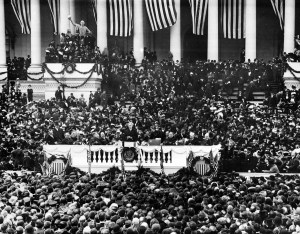
7. Harry S. Truman
Inauguration: January 20, 1949
Harry Truman stepped into the shoes of Franklin D. Roosevelt when Roosevelt died in 1945, a mere 82 days after Truman had become vice-president. After winding up World War II, Truman was elected President in 1948 and started defining the enemy that would be the focus of the next decade – communism. “The United States and other like-minded nations find themselves directly opposed by a regime with contrary aims and a totally different concept of life,” he said.
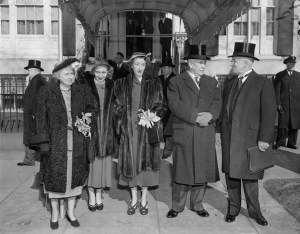
6. Ronald Reagan and Bill Clinton
Inauguration: January 20, 1981 (Reagan) and January 20, 1997 (Clinton)
Many presidential candidates have tried to recreate Ronald Reagan’s presidency, but few have tried to refute it until Bill Clinton took office. Sixteen years after Reagan said, “Government is not the solution to our problem; government is the problem,” Clinton responded, “Today, we can declare: Government is not the problem, and government is not the solution. We — the American people — we are the solution.”
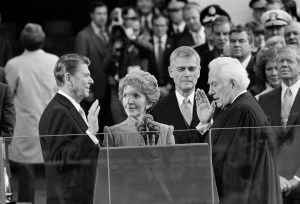
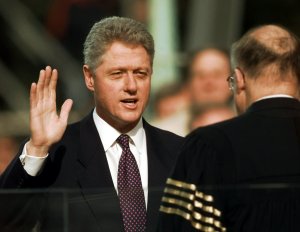
5. Barack Obama
Inauguration: January 20, 2009
The history of the moment – the country’s first black president – was undeniable, and Obama delivered a speech designed to inspire people to be better citizens. “Starting today, we must pick ourselves up, dust ourselves off, and begin again the work of remaking America.” The attendance hit a record high and the temperature hit a record low.
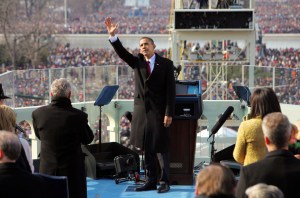
4. Thomas Jefferson
Inauguration: March 4, 1801
The election of 1800 was one of the more bitter battles of the republic’s early years, with Thomas Jefferson’s Democratic-Republican party defeating Federalist John Adams (and fellow Federalist Alexander Hamilton). Adams and Hamilton had a bitter split that divided their party and Jefferson surged to victory. Addressing the separation between parties, Jefferson said: “We have called by different names brethren of the same principle. We are all Republicans, we are all Federalists.”
[protected-iframe id=”e0e940c881310a7a132304349e1f7103-46934866-94750331″ info=”//giphy.com/embed/7qphyhBBpftq8″ width=”480″ height=”372″ frameborder=”0″ class=”giphy-embed” allowfullscreen=””]
3. John F. Kennedy
Inauguration: January 20, 1961
As important as inaugural addresses are, only a very few have continued to echo after the bunting has been taken down. Kennedy’s win, which started a new era in American politics, was crowned with his address and one of the most famous statements in history: “Ask not what your country can do for you but what you can do for your country.”
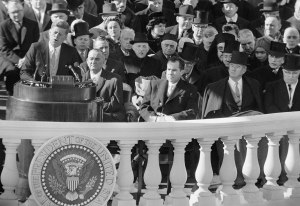
2. Franklin D. Roosevelt
Inauguration: March 4, 1933
With the Great Depression gripping the nation, Roosevelt swept to victory over Herbert Hoover. Roosevelt urged the country not to be afraid of these challenges, but to meet them head on, declaring “The only thing we have to fear is fear itself.” Roosevelt’s dynamic oratory helped the country regain its confidence.
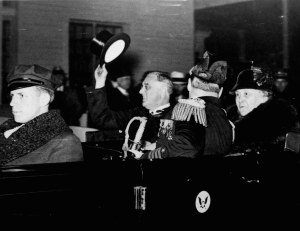
1. Abraham Lincoln
Inauguration: March 4, 1861
Every political talking head will tell you about the nation’s division today, but Lincoln was reelected as brother fought brother during the Civil War. With the war coming to a close, Lincoln tried to heal some of the wounds. “With malice toward none, with charity for all, with firmness in the right as God gives us to see the right, let us strive on to finish the work we are in, to bind up the nation’s wounds, to care for him who shall have borne the battle and for his widow and his orphan, to do all which may achieve and cherish a just and lasting peace among ourselves and with all nations.”
Sadly, he wouldn’t live to see the end of the war – he was assassinated less than a month after his inauguration.
